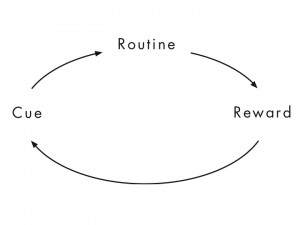
Do you know someone that started exercising only to burn out and quit after a few days?
It happens more than you think and if this has happened to you, then don’t beat yourself up. You made the right decision to give exercise a try as it has many positive benefits. Research has shown that physical activity helps you:
- Reduces the risk of heart disease
- Improves psychological well-being (how you feel)
- Enjoy a higher quality and longer life
The intentions are good — it is the approach that needs some improvement.
As former Navy SEAL commander, Mark Divine, writes in his book Unbeatable Mind, “It does nothing to hit a workout like an NFL linebacker, and then be too sore to do anything for a week. You start back at ground zero with that approach.”
This is an example of what not to do and there is a better way.
Exercise is a long game and you’ll see the benefits over an extended period of time (think months and years). If you remember this, then you’ll find that exercise can be made a part of your lifestyle with some small changes.
Start with why
Why do you truly want to exercise?
Think about that question for a moment. What will drive you to get out of a comfortable and warm bed to go to the gym in the morning or go for a run after a long day of work?
If you are having trouble finding an answer that you believe in, then it is okay. Here are some common reasons for exercising:
- I’ve excelled in my career but my health hasn’t been a priority. I want to lose weight so I can fit in my favorite pair of jeans again
- I want to feel energized throughout the day without relying on energy drinks and enjoy better sleep
- I love my family and the work that I do matters but I need a mental break for myself to recharge from everyday life
Use one of the reasons above as inspiration for finding your why. When you stumble, then “your why” will help you dust yourself off so you can keep moving forward.
You don’t need more motivation — you need a system
Willpower is what keeps you from eating an entire family sized bag of chips or a tub of ice cream in one sitting. It can be thought of as being in control or self-discipline. As you use willpower throughout the day then it becomes expended.
Think about a day at work that didn’t go so well — it was just a bad day. Maybe you were stuck in traffic and arrived late to work and then you were putting out fires all day at work. By the time you arrived home, you were exhausted and so you watched TV for the rest of the evening with your favorite junk food because you had a tough day. It is okay to feel tired but your willpower failed you.
Now think about a time where you had a great day at work — you “crushed it.” You woke up around sunrise to get some exercise in, enjoyed a delicious breakfast, got ready for work, and was out the door a little early. And you arrived to work early to get a jumpstart on the day and breezed through the day. When you arrived home, you felt good instead of being exhausted and now had the rest of the evening to spend time as you please.
Are you wanting to have more great days?
Creating a habit of exercising during the week can help make that a reality for you.
Exercise doesn’t have to be hard or painful…and it certainly doesn’t have to be in a gym. It simply requires you to move your muscles in a way that burns calories. -Chip Heath & Dan Heath of Switch
In the Power of Habit, Charles Duhigg shares a framework for a system for creating a habit.

It starts with a cue which is a trigger for a behavior. This then leads to a routine which is the behavior that is being performed. And this leads to the reward which transforms the behavior into something that you can do again and again without relying on willpower.
A cue can be a time of the day, a certain place, an emotion that you feel, the presence of certain people, or before an action occurs.
Here is the framework for the habit loop one more time: Cue → Routine → Reward ↺
Let’s take a look at the framework with going for a walk in the morning.
1) Cue → Seeing your sneakers by your bed when you wake up in the morning
2) Routine → Going for a walk around your neighborhood right after you get out of bed
3) Reward → Enjoying your favorite cup of coffee or tea
Remember that exercising does not have to be in a gym. Riding your bicycle, hiking with your friends, and walking around your neighborhood are all examples of exercise.
If you are wanting to start exercising, then start small with a walk in the morning just one time this week and be specific on the date and time. For example, I will wake up 30 minutes early on Wednesday at 7 am so that I can go for walk around my neighborhood.
Can you walk around your neighborhood right after you wake up just one time this week?
Here are some tips to make sure that you follow through:
- Write down your goal of going for a morning walk just one time this week on a piece of paper. Be specific with the date and time (e.g. Wednesday at 7 am)
- Place your socks and sneakers right next to your bed along with a bottle of water. Position them so you can’t miss them or step over them when getting out of bed
- The night before, read your note that you wrote on a piece of paper and be in bed a little earlier than usual
- When your alarm goes off the next morning then grab the water bottle and drink at least half as you’ll be dehydrated from sleeping. Turn your alarm off, put your socks and sneakers on, get your keys and head out the door
- When you complete your morning walk, then you should be pleased with yourself
Even though it was just a walk around the neighborhood, this is the kick start that you need to create momentum and momentum is key to accelerating the formation of your new habit.
Momentum will help you go from walking once a week in the morning to walking a couple times a week which will open the door for trying out other types of exercise that you may enjoy.
Notice that we did not start with a huge goal like walking 5 miles in the morning before work. This is equivalent to working out like a professional athlete and then being in so much pain where we want to quit shortly after getting started. If this has happened to you then know that you have the choice to start exercising again in a sustainable way.
We are taking baby steps by starting with a morning walk to show ourselves that we can rewrite our self-image as someone who values physical activity.
[bctt tweet=”Habits are a marathon, not a sprint -Charles Duhigg” via=”no”]
Get back on track when you fall off
Eventually, you’ll miss an exercise routine or two or three. Perhaps you’ll feel under the weather from being sick or go on a vacation where you were doing exciting things each day. Recognize that it is likely to happen so when it does, you can pick up where you left off.
Think back to the moment where you completed your first morning walk and the energy that you had that day. Remind yourself that you want that feeling again and commit to moving forward again.
Accountability can take help you stay committed. If you don’t trust yourself to get up early for a morning walk a few times each week, then you can plan to do it with a friend. When you make plans to exercise with someone, then you’ll follow through so you don’t let them down. Even though you may want to sleep in, the temptation to do so will be low when you are being held accountable to a friend by showing up.
Exercise is a keystone habit. This means that its positive effects will spill over into other areas of your life. As you start exercising regularly then you’ll enjoy better sleep and you’ll naturally make healthier choices for food.
Photo credit: Unsplash